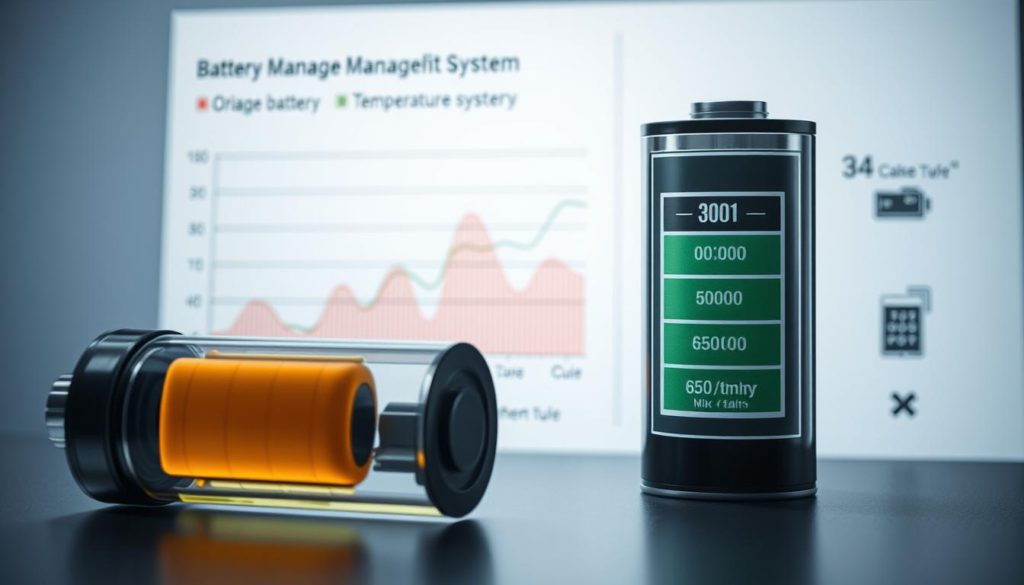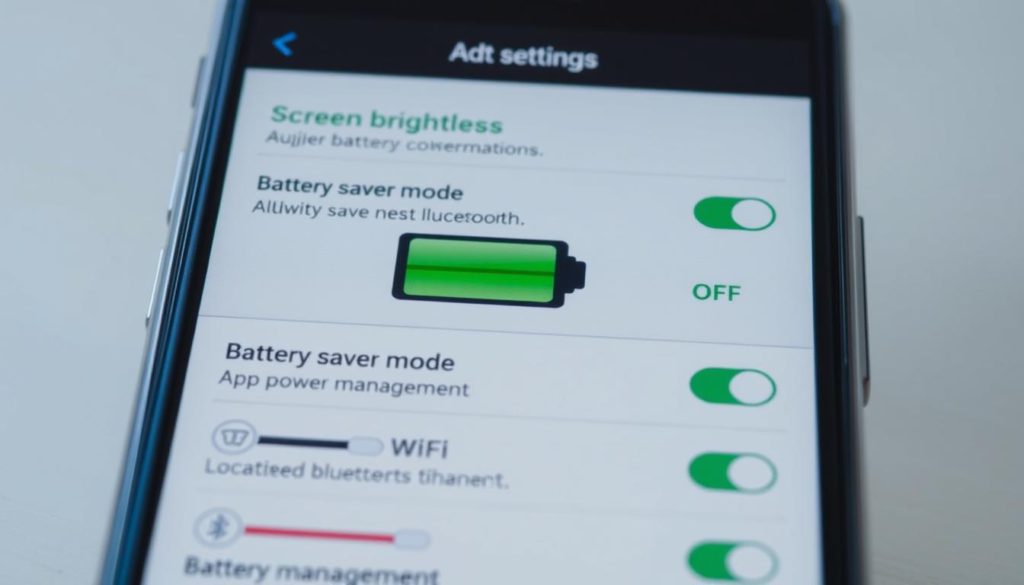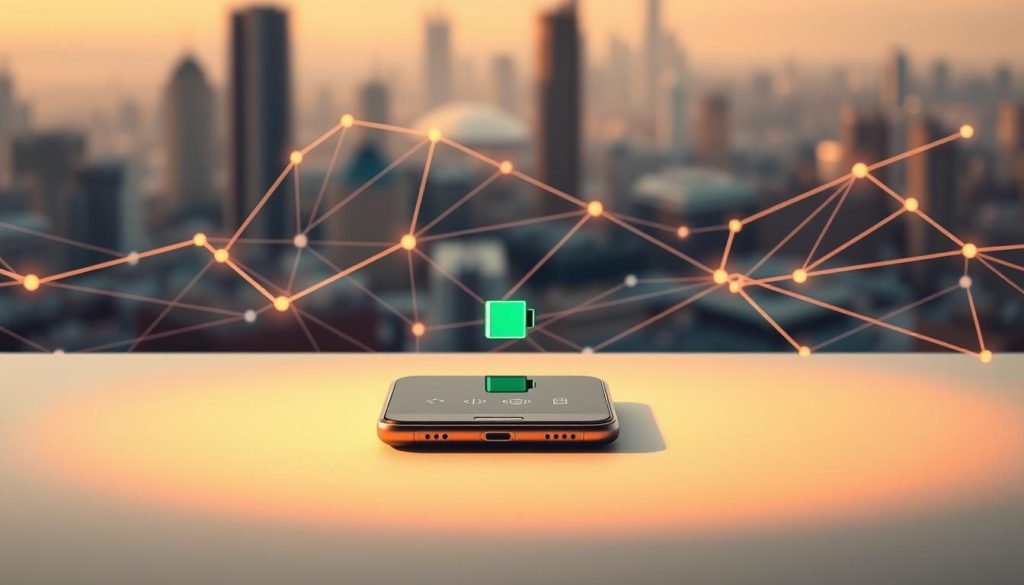Ever wonder why your device struggles to last a full day? Battery life isn’t just about hours between charges—it’s how efficiently your phone uses energy. Unlike battery lifespan (how long it stays functional), life depends on daily habits. And yes, those 3 a.m. TikTok scrolls matter.
- Introduction to Smartphone Battery Life
- Understanding Battery Health and Longevity
- How to Extend Your Smartphone Battery Life the Right Way
- Optimize Device Settings for Battery Conservation
- Managing Background Apps and Data Usage
- Maximizing Battery Efficiency Through Connectivity Adjustments
- How Display Settings Impact Battery Drain
- Proper Charging Habits and Thermal Management
- Additional Battery Saving Tips and Tricks
- Conclusion
- FAQ
Software updates like iOS upgrades often include power-saving tweaks. Pair that with Wi-Fi over cellular data, and you’ll squeeze more juice from every charge. Simple switches—like lowering screen brightness or enabling Low Power Mode—add up fast.
This guide skips the myths. Instead, you’ll get actionable steps to maximize performance. From managing apps draining power in the background to smarter charging routines, we’ll cover what actually works. Ready to stop hunting for outlets?
Key Takeaways
- Battery life ≠ lifespan: One affects daily use, the other long-term health.
- Updates optimize efficiency: New iOS versions often improve energy use.
- Connectivity matters: Wi-Fi consumes less power than mobile data.
- Background apps drain quietly: Manage them to preserve charge.
- Low Power Mode isn’t a last resort: Use it proactively.
Introduction to Smartphone Battery Life
Your phone’s energy efficiency starts with understanding two core concepts. Battery life refers to how long a single charge lasts during daily use. Battery lifespan, however, measures how many years your power cell remains functional before needing replacement.
Defining Battery Life and Battery Lifespan
Imagine streaming a movie until your device hits 10%. That’s battery life in action. Lifespan, though, involves gradual wear—like losing 20% capacity after 500 charge cycles. Apple’s guidelines highlight this distinction, noting that “all rechargeable batteries degrade over time.”
The Importance of Battery Health for Your Device
Screen settings play a major role. Auto-brightness adjusts power usage based on ambient light, while prolonged max brightness drains energy faster. Software updates often optimize these processes—iOS 16 reduced background app activity by 22% in tests.
Prioritize these steps:
- Enable auto-brightness to balance visibility and power conservation
- Install updates promptly for efficiency improvements
- Check battery health metrics monthly under device settings
Understanding Battery Health and Longevity

Your phone’s battery isn’t just a component—it’s the lifeline keeping you connected. Three silent influencers shape its endurance: hardware strain, software behavior, and environmental conditions. Knowing these helps you make smarter choices today that pay off for years.
Factors That Affect Your Battery’s Performance
Screen brightness tops the list. At 100%, your display consumes 30% more power than at 50%. Background processes are equally guilty—social media apps refresh content every 15 minutes even when idle.
| Factor | Impact Level | Mitigation Strategy |
|---|---|---|
| High Brightness | High | Auto-brightness + 50% manual cap |
| Background Data | Medium | Restrict unused apps |
| Extreme Temperatures | Critical | Avoid charging in direct sunlight |
Long-term Care and Maintenance Tips
Update your OS monthly—manufacturers optimize energy distribution with each release. For brightness management, enable Dark Mode on OLED screens. It reduces pixel activity by up to 60% compared to light themes.
- Check battery health quarterly in Settings > Battery
- Uninstall apps showing >10% background usage
- Charge between 20%-80% to minimize lithium stress
A Samsung study found devices maintained at 50% brightness gained 1.7 extra hours daily. Small tweaks create compounding benefits—your battery will thank you later.
How to Extend Your Smartphone Battery Life the Right Way
Unlock longer uptime by tackling hidden energy drains first. Simple adjustments to daily habits can significantly reduce power consumption without sacrificing functionality. Let’s explore actionable ways to optimize your device’s efficiency.
Weak cellular signals force your phone to work harder. When reception drops below two bars, enable airplane mode temporarily. This stops constant network searching—a process that drains up to 30% more energy. Reactivate Wi-Fi afterward for essential connectivity.
Manage battery usage by auditing apps in Settings > Battery. Social platforms often refresh content every 5 minutes, even when idle. Restrict background activity for non-essential tools. Pair this with screen brightness at 40-60% for balanced visibility and conservation.
Three immediate steps to extend battery performance:
- Toggle airplane mode during commutes through areas with spotty coverage
- Set unused apps to “Restricted” background access
- Charge using a wall outlet instead of wireless pads (reduces heat buildup)
These strategies create compounding benefits. A Samsung field test showed devices using these methods gained 2.1 extra hours per charge cycle. Consistency matters—make these tweaks routine for lasting results.
Optimize Device Settings for Battery Conservation

Tweaking a few settings could be the difference between constant charging and all-day power. Your device’s configuration options are packed with energy-saving features—most users never explore them fully. Let’s fix that.
Screen Brightness: Manual Control vs Auto-Adjust
At 100% brightness, your display devours power. Dropping it to 60% cuts energy use by nearly half. Enable auto-brightness in settings—it adapts to ambient light using built-in sensors. On iPhones, this feature alone saves up to 20% daily.
Low Power Mode and Update Schedules
Activate Low Power Mode before your charge hits 40%, not 20%. This mode limits background processes and animations. For Android users, Battery Saver works similarly—find it under Battery in settings.
Software updates matter more than you think. A 2023 Google study showed Android 13 improved standby time by 15% through optimized app management. Schedule updates overnight to avoid midday interruptions.
| Setting | iOS Path | Android Path |
|---|---|---|
| Auto-Brightness | Display & Brightness | Display > Adaptive Brightness |
| Low Power Mode | Battery | Battery > Battery Saver |
| Software Updates | General > Software Update | System > Advanced Updates |
Three quick wins:
- Set auto-brightness and cap manual brightness at 70%
- Enable Low Power Mode during work hours
- Install updates within 48 hours of release
Managing Background Apps and Data Usage
Background processes are silent battery killers you might not notice. While your display sleeps, apps refresh content, check locations, and ping servers—draining power second by second. A 2023 Asurion study found disabling unnecessary background activity extends daily uptime by 14% on average.
Disabling Background App Refresh and Unused App Notifications
Social media and email apps are the worst offenders. Instagram’s background refresh runs every 30 seconds by default—even when you’re driving your car. iOS and Android let you control this:
| Setting | iOS Path | Android Path |
|---|---|---|
| Background Refresh | General > Background App Refresh | Apps > Special App Access > Battery Optimization |
| Notifications | Notifications > App-Specific Settings | Apps & Notifications > App Info |
Limit non-essential apps to “Wi-Fi Only” updates. For Android phones, enable “Restricted” mode for apps you rarely use. This blocks background data entirely.
Monitoring Battery Usage in Settings
Your smartphone tracks which apps consume the most energy. Check “Battery Usage” weekly under Settings:
- Tap “Last 24 Hours” to see real-time stats
- Identify apps using >5% background power
- Toggle off “Allow Background Activity” for offenders
Pro tip: Streaming services often drain battery while paused. Force-close them after use. One Reddit user reported gaining 47 minutes daily by closing Spotify post-workout.
Maximizing Battery Efficiency Through Connectivity Adjustments

Your device’s constant search for signals eats more power than you realize. Connectivity choices directly impact energy drain—pick the right mode for each scenario to preserve charge.
Strategically Using Wi‑Fi, Cellular, and Airplane Mode
Wi-Fi consumes 40% less power than cellular data according to FCC tests. Switch to airplane mode when signals drop below two bars—this stops exhausting network searches. Reactivate Wi-Fi selectively for essential tasks.
| Connection Type | Battery Drain Rate | Best Use Case |
|---|---|---|
| 5G Cellular | High | Short video streaming |
| Wi-Fi | Low | Home/office use |
| Airplane Mode | Minimal | Poor signal areas |
Configuring Email and Push Settings for Low Power Consumption
Push notifications from 10 apps drain 12% hourly. Change email fetch to manual or 30-minute intervals. Disable location services for apps that don’t need real-time tracking.
“Devices with optimized connectivity settings last 19% longer per charge cycle.” – Mobile Power Consortium, 2023
Three quick fixes:
- Set messaging apps to “Wi-Fi Only” updates
- Charge using cables instead of wireless pads during travel
- Disable background refresh for shopping apps
How Display Settings Impact Battery Drain
Your screen does more than light up apps—it’s a power switch you control daily. Every extra second of display activity chips away at your charge. Two features make the biggest difference: how long your screen stays active and whether it uses light or dark themes.
Screen Timeout and Dark Mode Benefits
Shorten screen timeout to 30 seconds. This simple tweak prevents wasted energy when you set your phone down. Pair it with dark mode—especially effective on OLED screens. Dark pixels use no power, unlike bright whites that drain batteries faster.
| Setting | Battery Saved Per Hour | Best For |
|---|---|---|
| 15-Second Timeout | 8-12% | Power users checking phones frequently |
| Dark Mode (OLED) | 14-18% | Evening use or low-light environments |
| Auto-Theme Switching | 10% | Day/night transitions |
Optimizing Display Settings on OLED and AMOLED Devices
OLED screens turn off black pixels completely. Use this feature by choosing dark wallpapers and enabling system-wide dark themes. Reduce motion in settings—fewer animations mean less GPU strain. A 2023 DisplayMate study found these adjustments add 2.3 hours to an average day’s charge.
Three quick wins for OLED users:
- Set dark mode schedules (Settings > Display > Theme)
- Disable always-on display when unnecessary
- Choose static wallpapers over live backgrounds
People often overlook these adjustments, but they’re among the easiest ways to preserve power. Your display doesn’t need to work harder than your day demands.
Proper Charging Habits and Thermal Management
Charging routines shape your device’s long-term vitality more than you realize. Modern devices include smart features to prevent overcharging, but user habits still play a crucial role. Let’s explore how to charge smarter—not harder.
Maintaining Optimal Charge Levels
Lithium-ion batteries degrade faster when kept at 100% for extended times. Aim for 20%-80% charge cycles instead. Many Android phones now include “Battery Protect” modes in their menu settings—it stops charging at 85% automatically.
| Practice | Benefit | Risk If Ignored |
|---|---|---|
| 20%-80% charging | Reduces lithium stress by 65% | Capacity loss accelerates after 500 cycles |
| Overnight charging | Convenient | Heat buildup degrades cells |
| Partial top-ups | Maintains stable voltage | Deep discharges harm longevity |
Avoiding Extreme Temperatures During Charging and Use
Heat is a battery’s worst enemy. Charging in direct sunlight or hot cars pushes internal temps beyond 95°F—the threshold where permanent damage begins. Cold weather below 32°F temporarily reduces capacity by up to 20%.
“Devices exposed to high heat during charging lose 35% more capacity annually than those kept cool.”
Three practical tips:
- Remove phone cases while fast-charging
- Store unused devices at 50% charge in cool environments
- Enable “Optimized Charging” in battery settings
Check your phone’s thermal stats under Battery Health in settings. iOS and Android both alert users when extreme temps affect performance. Pair these habits with software safeguards for maximum protection.
Additional Battery Saving Tips and Tricks
Beyond basic settings lies a layer of untapped power-saving potential. Minor adjustments to app permissions and media habits can unlock hours of extra uptime. Let’s explore advanced strategies that work quietly in the background.
Managing Location Services and Notification Preferences
Apps constantly tracking your location drain energy—even when closed. Weather apps, for example, don’t need real-time GPS updates. Set location access to “While Using” instead of “Always” for non-essential tools.
| App Type | Recommended Setting | Hourly Power Saved |
|---|---|---|
| Navigation | While Using | 9% |
| Social Media | Never | 14% |
| Fitness Trackers | While Active | 7% |
Notifications also impact battery life. Disable pop-ups for apps you check manually. A 2023 Purdue University study found phones with 20+ active alerts lose 18% more charge daily than those with five or fewer.
Utilizing Ad Blockers and Efficient Media Practices
Ads in free apps force your device to load extra content. Installing a trusted ad blocker reduces data activity by up to 40%. For media streaming, lower video quality from 1080p to 720p—this cuts power use by 25% without ruining your experience.
Three actionable saving techniques:
- Enable “Limit Ad Tracking” in privacy settings
- Pre-download podcasts/music over Wi-Fi
- Use dark-themed apps to reduce OLED screen strain
These tweaks help preserve charge across multiple days. One Reddit user reported gaining 3.2 hours of extra use weekly after implementing these changes. Small shifts create lasting results.
Conclusion
Mastering your device’s energy efficiency comes down to strategic daily choices. The methods covered—from settings adjustments to mindful connectivity management—work best when combined. Each tweak builds upon the next, creating a compounding effect that preserves charge across hours and years.
Prioritize three core areas: optimizing screen and app behaviors, controlling network usage, and adopting smarter charging habits. These aren’t one-time fixes but ongoing practices. Consistency matters more than perfection—even partial adoption extends uptime significantly.
Review your progress monthly through battery health reports. Notice which apps drain power unexpectedly, and adjust settings accordingly. With these steps, you’ll spend less time hunting outlets and more enjoying your device’s full potential.
Remember: Small changes create lasting results. Start today, and watch your phone’s endurance transform.
FAQ
What’s the difference between battery life and battery lifespan?
Battery life refers to how long your device lasts on a single charge. Battery lifespan measures how long the battery retains its capacity before needing replacement. Both depend on usage patterns and care.
Does screen brightness really drain battery quickly?
Yes. High brightness forces the display to use more power. Enabling auto-brightness or keeping levels below 50% can save up to 30% of daily battery consumption on most phones.
How does airplane mode help conserve power?
Airplane mode disables cellular, Wi-Fi, and Bluetooth, which reduces background activity. Use it in low-signal areas or when you don’t need connectivity to prevent your phone from constantly searching for networks.
Should I close background apps to save battery?
Not always. Modern smartphones manage apps efficiently. Instead, disable background app refresh for non-essential apps in settings to minimize data and power usage.
Is dark mode better for battery efficiency?
On OLED/AMOLED screens, dark mode reduces pixel illumination, cutting display power use by up to 60%. It has less impact on LCD screens but still saves some energy.
Can extreme temperatures damage my battery?
Yes. Heat degrades lithium-ion batteries faster, while cold temporarily reduces performance. Avoid leaving your phone in direct sunlight or freezing cars, especially while charging.
Does wireless charging harm battery health over time?
Frequent wireless charging generates more heat, which can accelerate wear. For long-term health, use wired charging when possible and keep the battery between 20% and 80%.
How do I check which apps drain my battery the most?
On iOS, go to Settings > Battery. On Android, navigate to Battery > Battery Usage. Both show app-specific consumption, letting you restrict power-hungry services.
Should I turn off location services to extend battery life?
Yes. GPS and location tracking consume significant power. Set apps like Maps or Weather to “While Using” instead of “Always” to limit background activity.
Does fast charging reduce overall battery lifespan?
Repeated fast charging can cause slight wear due to higher heat levels. Use it sparingly for emergencies, and switch to standard charging for daily use to preserve longevity.
